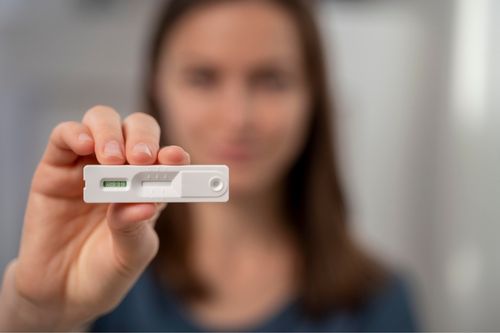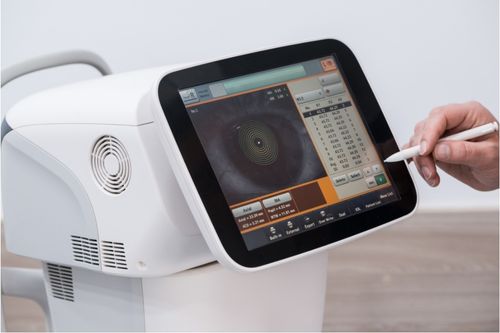Table of Contents
Follicular study | What is it?
The follicular study, also known as follicular Monitoring, is the process by which the doctor keeps track of the development of this follicle from the start of the menstrual cycle until it is prepared to release an egg. It is crucial to the evaluation and timing of IVF. It examines the process leading to ovulation using a straightforward method for routinely measuring ovarian follicles. When the next egg is delivered, medical professionals predict the development of the follicles in the ovaries.
There is a high chance of pregnancy during this time.
Why is follicular monitoring done?
Follicular research is an essential part of reproductive therapies. They are critical in determining how the woman’s body responds to treatment. If someone has chosen the IVF (in-vitro fertilization) method of fertilization, follicle scans are crucial. It evaluates the situation, counts the eggs produced in single ovulation, and analyses the hormones at work. If the hormone levels are off, taking more medication will increase the chances of conception.
Follicular Monitoring can help determine when in the cycle a woman will ovulate. It aids in the planning of intercourse during that time, increasing the chances of pregnancy significantly. It also aids in the diagnosis of ovulation-related issues. Some of these issues may also be interfering with your pregnancy.
However, it does not guarantee sperm fertilization of the egg or implantation of the fertilized egg on the wall of the uterus. Some issues prevent you from conceiving after ovulation. These scans also do not take care of them.
When is follicular monitoring necessary?

A follicle scan is a non-invasive procedure that allows the doctor to observe the follicle’s growth within the ovary. Sonographers use small plastic probes inserted into the vagina to examine the development of the egg within the follicle. Here are some of the benefits of follicular Monitoring.
- Presume you’re under 35 and have been trying to conceive for about a year. It is the first step in excluding any ovulation-related problems.
- You may be eligible if you’re over 35 and haven’t been able to conceive in the last six months.
- If you have PCOD, you may have an irregular cycle and irregular ovulation. A non-ovulatory cycle is also possible.
- When you use fertility drugs to induce ovulation or create multiple follicles during IUI or IVF.
Your sonographer or doctor may advise you to have these scans on days 6 or 7 of your cycle. It is, however, presumptive that you have a 28-day cycle. She will contact you every two to three days to remind you of the scans.
How does follicle tracking work?
Follicle tracking consists of a series of 5 to10 minute vaginal ultrasound scans. On the ninth day of the cycle, follicles begin to form. The scans are repeated until the follicles have disappeared and ovulation has begun. After that, couples are encouraged to engage in sexual activity. It facilitates conception by optimizing the timing of the sperm-egg meeting.
The doctor measures the size of the follicles. He also assesses the endometrium, or uterine wall, thickness. A Doppler scan may also be used by the doctor to assess blood flow to the follicle and endometrium. For a successful pregnancy, a mature follicle measuring 18-25mm and an endometrium measuring more than 10mm is considered normal.
Who needs follicle tracking?
It is usually recommended for women who don’t know when to ovulate, have miscarriages, or take Clomid or FSH.
- Despite using prediction kits, women who do not know when they are ovulating may require follicle tracking.
- These scans can help women who have had miscarriages in the early stages of pregnancy understand why they happened.
- Women who have been taking drugs to induce ovulation or to treat other fertility-related issues.
The success rate of follicular

People frequently have unreasonable expectations of follicular studies. It is important to acknowledge that the success rate is only 10%. These scans can be highly stressful for the couple at times. Doctors are frequently too casual when recommending these scans, failing to recognize the strain it places on a marital relationship. It is best to limit ovulation tracking to one cycle. It is sufficient because it teaches you to correlate the scan with body signals such as cervical mucus and ovulation pain. You can track ovulation discreetly at home, increasing your chances of pregnancy rather than being overburdened by scans.
Key takeaways
- A follicle study is usually performed between days 9 and 20 of a woman’s menstrual cycle.
- The follicle study detects when the follicle ruptures and the egg is released.
- A follicle study can aid in predicting the time of ovulation for assisted reproduction.
- Follicular studies aid in the detection of luteal phase deficiency.
We hope this blog was informative. If so, please share your views in the comments below. Click here to reach out to us for more information. We would be happy to assist you with your queries.
Liked this blog? Read next: What exactly is ophthalmology? – Study of eye
FAQ
Q1. What should I expect from a follicular ultrasound?
Ans – Although the procedure is usually painless, there may be some minor discomfort. Unlike an abdominal sonogram, a small ultrasound probe will be inserted into the vagina to provide an accurate image without the bladder being completely empty.
Q2. What should I do in preparation for a follicular check?
Ans –On the second day of menstruation, a follicular scan is performed. Take a bath and put on comfortable clothes that will allow you to perform the scan. Unless otherwise directed by the doctor, there are no dietary restrictions for the scan.
Q3. How does follicular study aid in conception?
Ans – A follicular study measures the size of any active follicles in the ovaries that can contain an egg and accurately predicts ovulation, allowing for natural fertilization.






